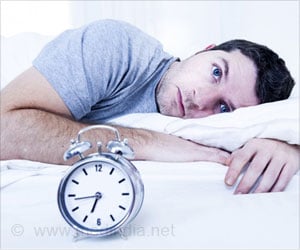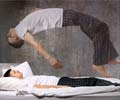- Out-of-body experiences in relation to lucid dreaming and sleep paralysis: A theoretical review and conceptual model - (https://www.sciencedirect.com/science/article/pii/S0149763424002392)
About
Sleep paralysis is a relatively unknown event that occurs when one is falling asleep or waking up. While many link it to frightening occurrences characterized by hallucinations, rigid body movements, and inability to move, related research is now pointing to the fact that it means a gateway to other forms of changed consciousness like lucid dreaming and sleep paralysis orgasms or Out-of-body experiences (OBEs)(1✔ ✔Trusted Source
Out-of-body experiences in relation to lucid dreaming and sleep paralysis: A theoretical review and conceptual model
Go to source).
Did You Know?
Sleep paralysis can turn into lucid dreaming if you stay calm! #sleepdisorders #medindia
What Is Sleep Paralysis?
Sleep paralysis is an actual or relatively brief state of motor and sometimes verbal immobility which happens at the onset of, or during, REM sleep. During this phase, the body experiences physiological relaxation –a body shutdown that is peculiar to the dreams. Atonia is said to persist in the event that the individual wakes up and becomes consciously aware of his/her environment.
Symptoms and Features of Sleep Paralysis
- Immobilization: This is any condition in which a patient cannot move any part of his body at all while being fully conscious.
- Hallucinations: These may be visual (as in seeing shadowy figures), auditory (as in hearing voices or wrong footsteps), and even more physical in sensation in the form of pressure on the chest.
- Emotional Response: Mental upset fear or dread is definite, and there is an increase in hallucinations most of the time.
This condition is often associated with sleeping abnormalities and conditions, stress, and other sleep disorders including narcolepsy.

Traumatic Side of Sleep Paralysis
In particular, sleep paralysis leaves a person feeling rather uncomfortable or even scared. These elaborated hallucinations in addition to the immobility can well lead to feelings of powerlessness and panic.
Cultural and Personal Interpretations
Sleep paralysis is looked at through cultural spectacles in different cultures. For instance:
- It is also (in some cultures) referred to as an act of invasion by a spirit or a demon on the chest.
- In the recent past, added scenes especially the filmed ones may feature alien abduction tales.
These cultural stories may even exacerbate the patients’ fear and anxiety about the experience.
Psychological Effect
Repeated episodes of sleep paralysis can contribute to:
- Anxiety: The fear to have a relapse may cause sleeplessness or the inability to go to sleep.
- Post-traumatic Stress: To some extent, the hallucinations and perceived danger may lead to permanent psychological dysfunctioning.
Sleep Paralysis as a Gateway to Lucid Dreaming
Sleep paralysis, although often uncomfortable, can lead into a lucid state meaning the person is awake inside the dream and can sometimes control it. This potentiality exists because sleep is marked with increased consciousness.
How Does It Work?
- Maintaining Calm: One way to lower the chances of fear occurring is by having a calm demeanor during sleep paralysis so as to have focus.
- Visualizing a Dream Scene: Counting sleep, trying to induce falling asleep or deliberately picturing a favorable dream scenery is helpful to gain control of the mind for a lucid dream.
- Reality Checks: Some attempts at checking (for instance, when one tries to move a hand or questions the surroundings) is useful for waking up into a dream state.
This practice corresponds with the practice of wake initiated lucid dream (WILD) in which people get into a lucid dream from wakefulness.
Connection to the Sleep-Related OBE Spectrum
Sleep paralysis, lucid dreaming, and OBEs have been repositioned in light of the current studies into the sleep-onset REM mental events spectrum. This continuum indicates that these are not separate processes but assimilable endo phenomena, which have similar neurophysiological substrates.
Neurophysiological Basis
- REM Intrusion: Sleep paralysis is a state in which REM atonia happens during wakefulness.
- Heightened Bodily Awareness: Some of the symptoms of sleep paralysis are quite similar to those of an OBE, and the enhanced awareness during the condition might play a role in such sensations as the inability to feel oneself, or when people begin to feel as if they are hovering outside their own bodies.
- Neural Correlates: A number of areas in the brain including the insular cortex and temporo-parietal junction (TPJ) is involved in OBE’s and could also be relevant to sleep paralysis and lucid dreaming. Limbic and paralimbic structures involved in generating these states receive input from sensory and spatial systems, which may account for the richness and distortion with these states.
Transformative Potential: From Fear to Exploration
Learned as a terrifying condition, the phenomenon of sleep paralysis opens up opportunities for self-reflection and other ways to experience reality. With practice and understanding, individuals can learn to navigate this state and use it to:
- Induce Lucid Dreams: Control of the passage between sleep paralysis and lucid dreaming provokes the imagination in a person.
- Explore OBEs: Paranormal experiences in sleep paralysis may provide the opportunity to better understand how body awareness and consciousness are achieved during OBEs.
- Foster Mindfulness: The combination of emotions that a patient goes through and comes out of sleep paralysis could be seen as helpful to build up the strength of character and/or improving mindfulness.
Sleep paralysis is one of the few things that exist between trauma and transformation.
Despite causing anxiety and severe panic it opens the gate to the exciting world of lucid dreaming and other mind states. By being aware of these factors and the development of skills that can help manage this process it is possible to transform this seemingly disturbing process into a positive opportunity for self-development or experimentation.
With further research on the neurological functioning that governs the sleep paralysis, OBE, and lucid dreaming it will be realized that the phenomena that happen during sleep are insightful on the workings of sleep, consciousness and self-awareness.









